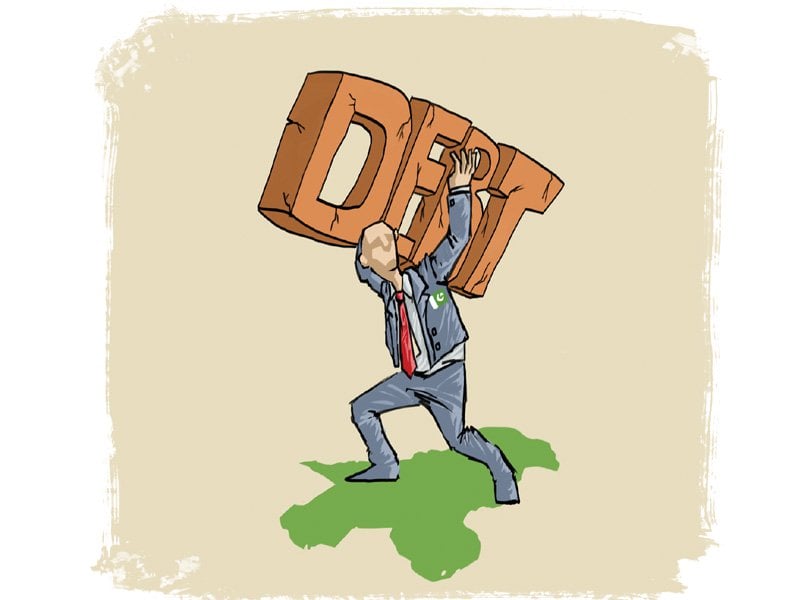
The new deadline for making these changes is looming as the World Bank Board is scheduled to consider the approval of the loan on May 14. The approval will also mark restoration of the budgetary support after almost three years by the World Bank.
The key features of the new plan include consolidating the debt management functions in the Ministry of Finance and placing the Debt Office under the complete control of bureaucracy by ending the role of the private sector experts.
The process will be completed first by dismantling the existing structure through a notification in the next few weeks and then amending the Fiscal Responsibility and Debt Limitation Act, 2005. The World Bank has linked approval of the $500 million loan with these changes.
“We are recommending the government to restructure the existing mandate into a single debt management office, which is not just a coordinating entity like the Debt Policy Coordination Office (DPCO) that only advises the finance minister,” said World Bank Senior Country Economist Mohammad Waheed.
The Express Tribune had reported that the Ministry of Finance ordered to route the files of the Debt Office through an additional secretary finance. But the new details suggest that the government’s plans are beyond bringing the Debt Office under the additional secretary’s control.
“We do not want to create [an] island of excellence for some time that eventually evaporates,” said Waheed while commenting on appointment of the director general of Debt Office from the private sector.
“Debt management and fiscal policy in Pakistan is ad hoc and reactive,” the economist said, adding that because of fragmentation of work, Pakistan does not have control over debt maturity profile, pricing and borrowing plans and “there is no coordinated investors’ relationship”.
Shabih Ali Mohib, the World Bank programme leader on equitable growth, finance and institutions, said, “The country should set up an integrated Debt Management Wing under the additional secretary to essentially do the entire debt management of the country.”
Waheed said the World Bank and the government of Pakistan have discussed the issue of the Debt Office being managed by the private sector people as compared with a set-up that is managed by the civil servants, like in the rest of the world.
Mohib suggested that there should be one debt management office that should be responsible for policy and determining the overall debt level and its cost and structure. Pakistan’s debt-to-gross domestic product (GDP) ratio remains very high that underscores the need for better debt management. The debt management functions are fragmented in Pakistan among Ministry of Finance, Ministry of Economic Affairs and the State Bank of Pakistan.
The present legal cover is very confusing, according to Waheed.
Pakistan’s public debt-to-GDP ratio stood at 85% at the end of last fiscal year, which may deteriorate further due to dismal performance of the Federal Board of Revenue and adverse implications of COVID-19.
The existing Debt Office had been set up under the Fiscal Responsibility and Debt Limitation (FRDL) Act 2005, but its role was largely restricted to coordination and advising the government.
Now, it will be the first drastic change since 2005 in the government’s debt management structure, which is pegged with a World Bank loan of $500 million.
“The 2005 idea was good but its implementation was not that good,” said the senior country economist.
The World Bank Board meeting that had been postponed earlier is now scheduled to approve a $500 million development policy credit called the Resilient Institutions for Sustainable Economy (RISE) programme on May 14. Another policy credit of $250 million for the Securing Human Investments to Foster Transformation (SHIFT) programme is also on the board’s agenda.
The government should issue a notification regarding the three-year RISE programme in a couple of weeks. Initially, the Debt Office would be established and in the second phase the FRDL Act would be amended.
Whenever the government completes the reform framework, the loans would be approved and the new third tentative deadline is May 14.
Making fiscal policy statement and doing debt sustainability analysis is not the job of the debt policy office, World Bank officials said, adding that the debt management should be part of the core government.
“The government’s overall fiscal planning is very poor. It neither has a very solid capacity to prepare its fiscal plans nor does it have the capacity to prepare macroeconomic frameworks,” the senior country economist said. “It is mostly relying on the SBP-prepared framework. The World Bank is focusing on how the government can have a better fiscal framework, which covers all aspects, including the provinces. It will also help to bring a consolidated borrowing plan and medium-term budget framework.”
Waheed said the Economic Affairs Division’s role of recording debt would also gradually diminish and the central bank would only act as a fiscal agent of the government.
“The debt recording terminal will be shifted to the new Debt Office for the purpose of domestic and external debt recording. The choice is between institutionalising the management and running it on ad hoc basis,” he said, adding that the second best option would be to make it part of the government.
Published in The Express Tribune, April 3rd, 2020.
Like Business on Facebook, follow @TribuneBiz on Twitter to stay informed and join in the conversation.









































COMMENTS
Comments are moderated and generally will be posted if they are on-topic and not abusive.
For more information, please see our Comments FAQ